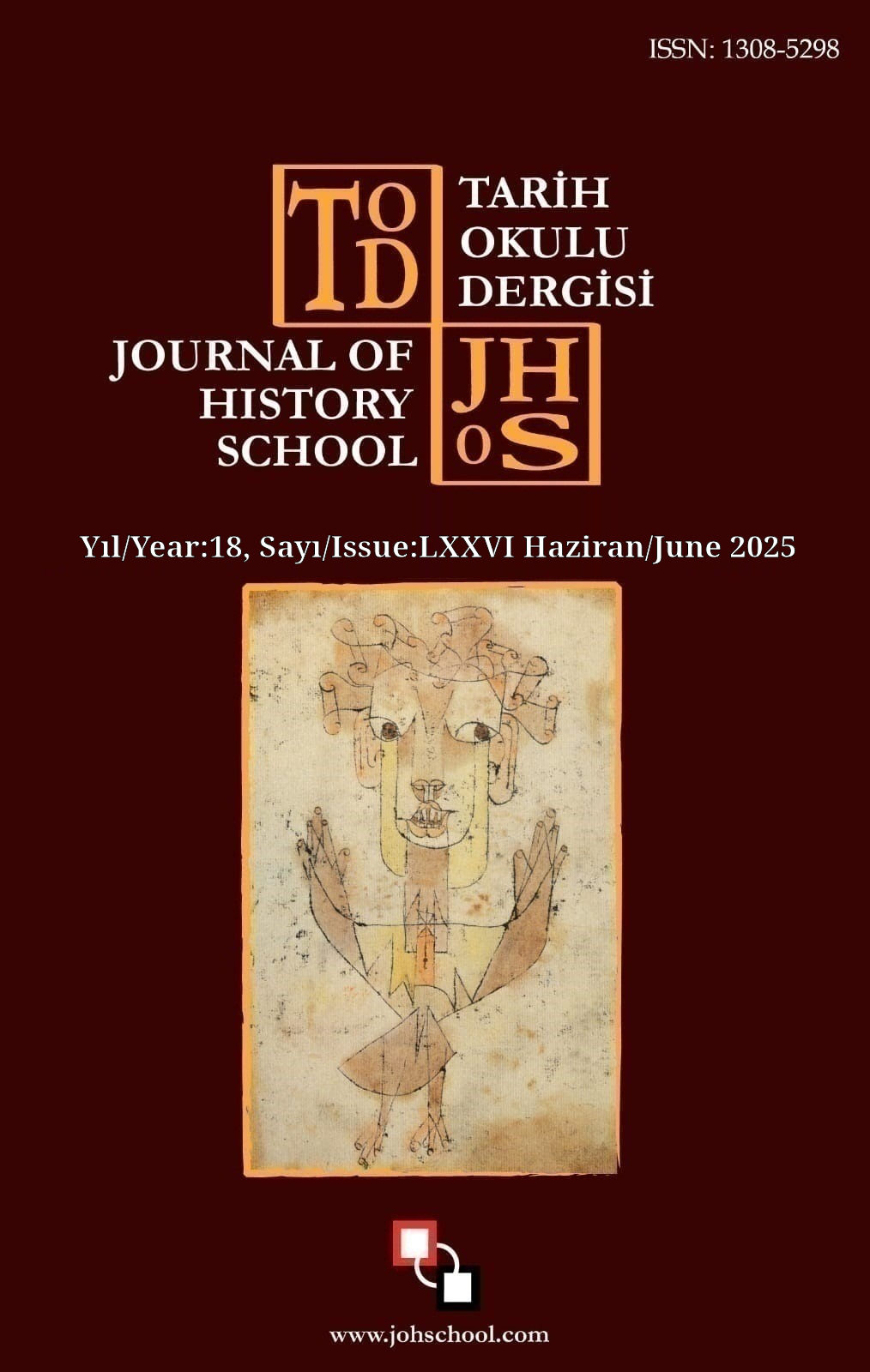Author :
Abstract
Anadolu’nun en eski kentlerinden olan Tokat ili, sahip olduğu kültürel özellikleri ile her dönemde dikkat çeken şehirlerden biri olmuştur. Özellikle mimari mirasıyla öne çıkan şehrin en önemli yapı türlerinden biri tarihi camileridir. Bu camilerden biri olan Malum Seyyit Tekke Köyü Camii, eşine az rastlanılan bindirme tavanlı ahşap örtü sistemine sahiptir. Bindirme tavanlı özgün örtü sistemine sahip yapının mimari özellikleri ile ilgili literatürde bilgi yer almamaktadır. 1995 yılında tescillenen caminin kitabesi bulunmamakta ve Vakıflar Genel Müdürlüğü’nün arşivlerindeki farklı belgelerde farklı tarihlerde inşa edildiği kaydedilmiştir. Bu sebeple, yapının kesin yapım tarihi hakkında net bir bilgi ile karşılaşılmamıştır. Çalışmada, Malum Seyyit Tekke Köyü Camii’nin öne çıkan mimari özelliklerinin tespit edilerek literatüre kazandırılması ve Anadolu’daki diğer ahşap direkli camilerle karşılaştırılarak yapım tarihi bilinmeyen bu yapıya tarihlendirme önerisi getirilmesi amaçlanmıştır. Yapının, rölövesi alınarak özellikle plan ve örtü sistemi açısından benzer özelliklere sahip olan ve 2023 yılında UNESCO Dünya Miras Listesi'ne kaydedilen Afyon Ulu Camii, Arslanhane Camii, Eşrefoğlu Camii, Mahmut Bey Camii ve Sivrihisar Camii ve Tokat’taki diğer ahşap direkli bindirme tavanlı Üzümören Ulu Camii ve Erbaa Silahtar Ömer Paşa Camii’nin karşılaştırılması yapılmıştır. Araştırmada, bindirme tavanlı ahşap camilerin tipolojik analiz yöntemi kullanılarak karşılaştırma tablosu oluşturulmuş ve bu tablo üzerinden yapılar incelenmiştir. Araştırma bulgularına göre, Malum Seyyit Tekke Köyü Camii'nin farklı dönemlerde çeşitli müdahaleler geçirdiği ve yapının ahşap direkli bindirme tavanlı halini tahmini olarak XVII-XVIII. yüzyıl arasında aldığı düşünülmektedir.
Keywords
Abstract
Tokat, one of the oldest cities of Anatolia, has been one of the cities that attracted attention in every period because of its cultural features. One of the most important building types of the city, which stands out especially for its architectural heritage, is the historical mosques. One of these mosques, Malum Seyyit Tekke Köyü Mosque, has a wooden cover system with a rare overlapping ceiling. There is no information in the literature about the architectural features of the building with its original cover system with overlapping ceilings. Registered in 1995, the mosque has no epigraph, and different documents in the archives of the Directorate General of Foundations record that it was built on various dates. For this reason, there is no clear information about the exact construction date of the building. This study aims to identify the prominent architectural features of the Malum Seyyit Tekke Village Mosque and to bring it to the literature and to make a dating proposal for this building, whose construction date is unknown, by comparing it with other wooden-pillared mosques in Anatolia. The building was surveyed and compared with the Afyon Ulu Mosque, Arslanhane Mosque, Eşrefoğlu Mosque, Mahmut Bey Mosque, Sivrihisar Mosque and Sivrihisar Mosque, which have similar features, especially in terms of the plan and covering system and were inscribed on the UNESCO World Heritage List in 2023, as well as the other wooden pillared overlapping ceiling Üzümören Ulu Mosque and Erbaa Silahtar Ömer Paşha Mosque in Tokat. In the research, a comparison table was created using the typological analysis method of wooden mosques with lap ceilings, and the structures were analyzed through this table. According to the findings of the research, it is thought that the Malum Seyyit Tekke Village Mosque underwent various interventions in different periods and that the building took its wooden pillared overlapping ceiling form between the XVII-XVIII centuries.





